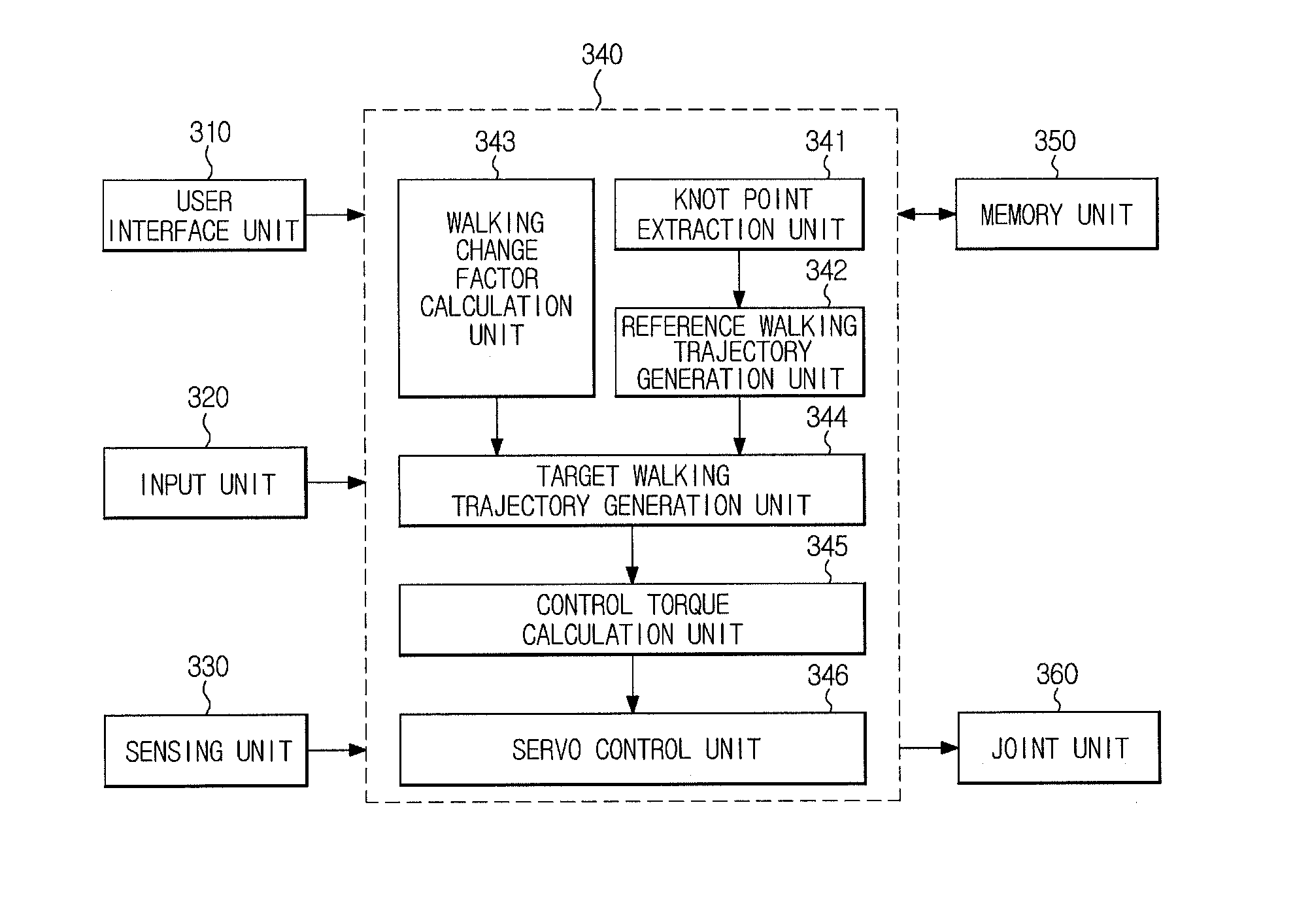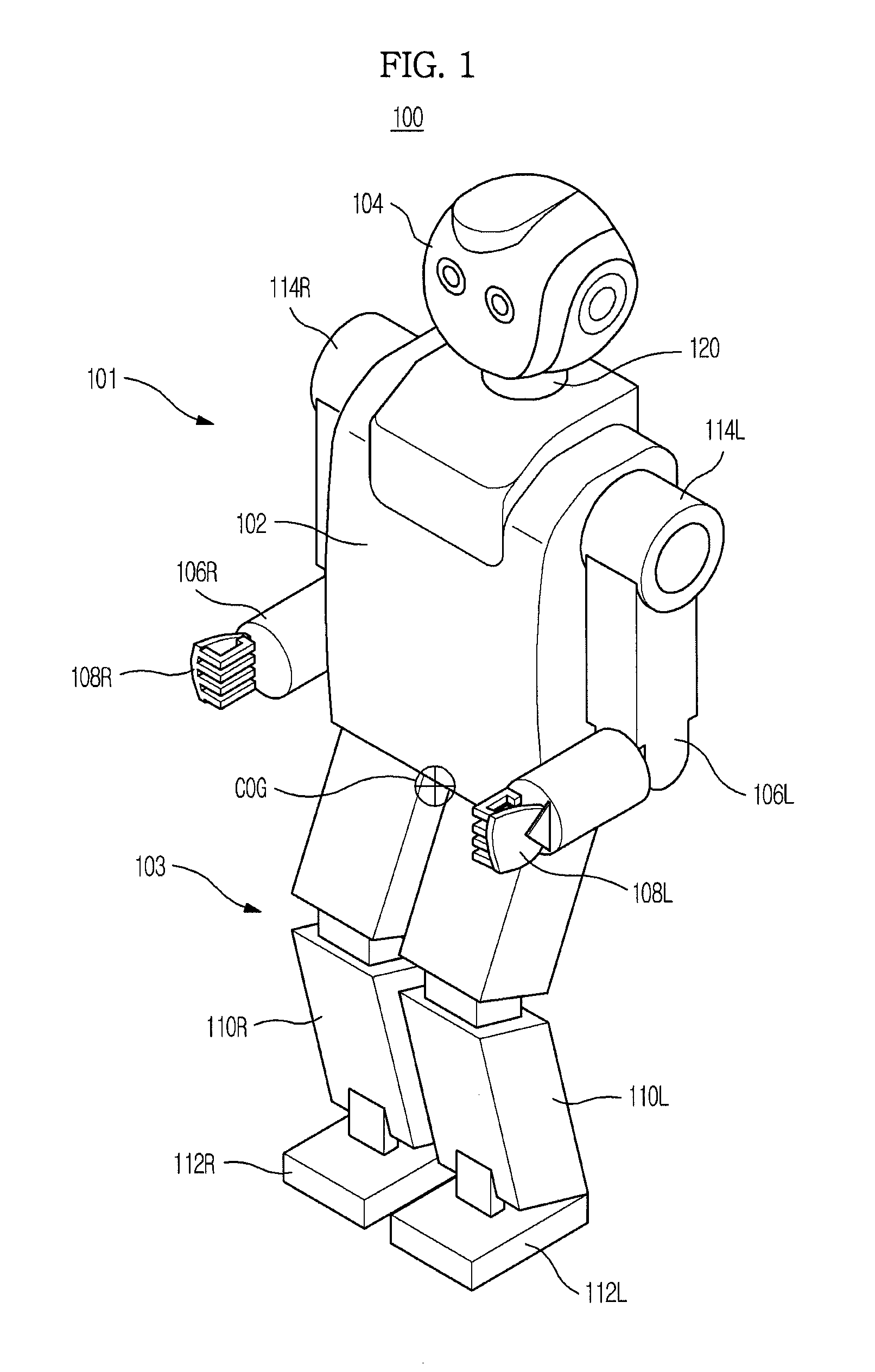Walking robot and control method thereof
a robot and walking technology, applied in the field of torque-based walking robots, can solve the problems of high servo gain, low energy efficiency and high stiffness of joints, and high impact on the surrounding environmen
- Summary
- Abstract
- Description
- Claims
- Application Information
AI Technical Summary
Benefits of technology
Problems solved by technology
Method used
Image
Examples
Embodiment Construction
[0054]Reference will now be made in detail to embodiments, examples of which are illustrated in the accompanying drawings, wherein like reference numerals refer to like elements throughout.
[0055]FIG. 1 is a view illustrating an external appearance of a walking robot in accordance with an embodiment.
[0056]As shown in FIG. 1, a robot 100 is a bipedal walking robot, which walks erect with two legs 110 in the same manner as a human, and includes an upper body 101 including a torso 102, a head 104 and arms 106R and 106L, and a lower body 103 including the two legs 110R and 110L.
[0057]The upper body 101 of the robot 100 includes the torso 102, the head 104 connected to the upper portion of the torso 102 through a neck 120, the two arms 106R and 106L connected to both sides of the upper portion of the torso 102 through shoulders 114R and 114L, and hands 108R and 108L respectively connected to tips of the two arms 106R and 106L.
[0058]The lower body 103 of the robot 100 includes the two legs...
PUM
 Login to View More
Login to View More Abstract
Description
Claims
Application Information
 Login to View More
Login to View More - R&D
- Intellectual Property
- Life Sciences
- Materials
- Tech Scout
- Unparalleled Data Quality
- Higher Quality Content
- 60% Fewer Hallucinations
Browse by: Latest US Patents, China's latest patents, Technical Efficacy Thesaurus, Application Domain, Technology Topic, Popular Technical Reports.
© 2025 PatSnap. All rights reserved.Legal|Privacy policy|Modern Slavery Act Transparency Statement|Sitemap|About US| Contact US: help@patsnap.com



